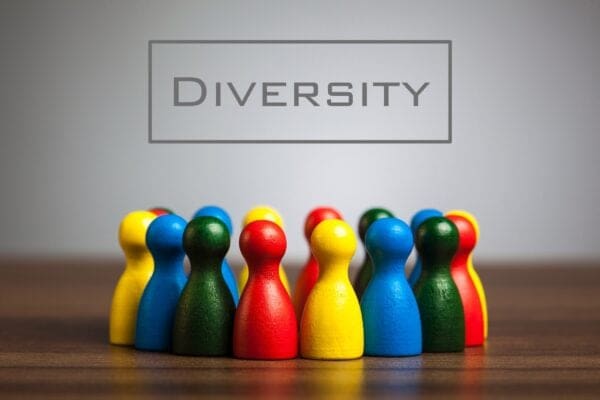Why We Must First Change the Drinking Culture in Order to Reduce Alcohol Harm
Fancy a drink?
For years, I longed to hear these 3 little words at the end of each long and arduous day of being a working parent. “I thought you’d never ask,” I’d quip back to my husband, as the inevitable Malbec would be poured and we’d finally sit down for some adult time.
Drinking alcohol has become the go-to reward for so many of us. We’ve been conditioned to use alcohol not only as a reward but to de-stress, to celebrate, to commiserate, to lubricate, to appear sophisticated, to reduce social anxiety – is there anything this magic elixir cannot do?
How exactly did we end up living in a society that values alcohol so highly? In this article, I’ll explore the role of alcohol culture on our drinking habits and argue that, if we’re serious about reducing alcohol harm, we need to change the culture, and I’ll demonstrate why the workplace is the ideal setting to initiate this change.
What is Meant by Drinking Culture?
The Alcohol Culture Framework has a usefully defined drinking culture, or alcohol culture, as ‘the way people drink including the formal rules, social norms, attitudes and beliefs around what is and what is not socially acceptable for a group of people before, during and after drinking.’ There’s a growing interest in drinking culture around the world, with Holly Whitaker’s ‘Quit Like a Woman’ being amongst the first mass-market publications to really challenge our thinking on this.
Clearly, there can be huge differences in drinking culture between groups of people, and many of us will belong to several groups, each of which may have its own drinking culture.
For example, a loving father who plays rugby at the weekends may drink differently when out at dinner with his wife and children compared with the way he drinks when on tour with the rugby team. A middle-aged woman might have one glass of wine when out at dinner with work colleagues, but have a whole bottle when at home with her partner on a Friday evening.

Drinking Doesn’t Always Look the Same
The alcohol culture within a group may also change over time, as influences such as demographics, geographical location and changes to laws, policies and marketing change the shape of attitudes towards alcohol. As we move through different life phases, many of us change our drinking behaviours to better reflect our shifting priorities.
If drinking culture is not a static state, we can therefore conclude that it can be shaped and influenced. I argue that this mailability can be used to reduce alcohol harm. Through small changes to how alcohol is presented and how Alcohol Use Disorder (AUD) is understood, we have an opportunity to support people in making healthier choices about their own drinking and reducing alcohol harm.
Why do Westerners Drink So Much?
It’s often mooted that westerners tolerate alcohol well because, in the days before modern water sterilisation, the western world tended to drink ‘small beer’, a mildly alcoholic fermented brew known for its hydrating properties. Whereas the eastern world tended to brew green tea to make a safe drink. It’s impossible to know the extent to which this has contributed to western drinking culture. Drinking in Asian culture has grown rapidly in recent years, but it’s still the west that leads the way in the per capita consumption data.
The reported rates of Alcohol Use Disorder (AUD) can help us to understand which countries have the highest proportions of dangerous drinking. Hungary comes out on top with a staggering 21.2% of the population suffering from Alcohol Use Disorder, followed by Russia and Belarus. The USA ranks 7th in the world, Australia 11th and the UK 20th.
Take a look around the globe and it’s clear that drinking is definitely not a necessary part of human culture. What cultures don’t drink alcohol? Plenty – pretty much the entire Muslim world for a start.
Australia is a particularly interesting case, with so much of the world’s wine production now firmly planted on its soil. So, what is Australian drinking culture? Reportedly, binge drinking is not only encouraged, it’s glorified. Sound familiar? To a large extent, it’s been the same in the UK and the USA. However, times are changing, with sales of no and low-alcohol options growing exponentially across all 3 of these regions, customers are voting with their feet and waking up from collective amnesia, finally seeing alcohol for what it is – a dangerous and addictive chemical substance that we can all live without.

Sticky Learning ® is 7 times more effective than 1-day training courses. Plus, you will get a Chain of Evidence proving your Return on Investment. Discover soft skills training that changes behaviours long term.

Why is Alcohol Such a Big Part of Our Culture?
Culture is the result of a hugely complex interaction of hundreds and thousands of independently variable, ever-shifting factors. It would be impossible in the scope of this article to explore them all, so I will focus on those that I believe have the biggest influence on the overall drinking culture in the UK.
Why do Brits Drink So Much?
New Drinks
Arguably, the single biggest factor contributing to the steady rise in UK alcohol consumption from the post-war 1940s through to the peak of consumption in 2004 is marketing. Alcohol is big business and the introduction of ‘new’ drinks such as lager and wine from our European neighbours has revolutionised the drinks industry over the course of the 20th century.
With Heineken’s “refreshes the parts other beers cannot reach” campaign in 1975-6, lager exploded into the UK market and the days of pubs being a male-dominated territory where a pint of mild was the go-to drink were well and truly over. The popularity of lager is a major factor contributing to the rise in the strength of alcohol over the past 50 years. The ubiquitous pint of mild was about 3% in strength, whereas lager is closer to 5%.
Off-Licences
Another major influence is the relaxation of the rules surrounding off-license sales in 1962. This flooded the UK supermarkets with cheap alternatives to the great British pub. The market exploded with innovative new ways to entice the British drinker. In turn, wine saw a steady rise from a rarity in the 1960s to a daily tipple for the middle classes by the turn of the century.
Further innovation came in the form of alcopops, and drinks laced with caffeine and guarana, which were developed in order to counteract the perceived threat of the rave culture to the drinks industry. Pubs became bars, with chrome and glass replacing the traditional polished mahogany. The jukebox was replaced by a DJ booth and scantily clad women sold shots of 40% proof spirits from gun holsters. The lines between bars and nightclubs were further blurred by the abolition of the 11 pm curfew in November 2005.
Inclusion of Women

There’s also been a marked shift towards the targeting of women by the drinks industry. Other factors are at play, of course, such as the rise in women’s independence, equality and the rapid changes to the financial status of women in society. Alcohol consumption by women almost doubled in the last 30 years of the 20th Century, something that I distinctly relate to, having been very much part of the ladette culture, downing pints and keeping up with the boys at university and in my early career.
I argue that it’s time to challenge the glamourisation of alcohol that prevails in the UK today. Beautiful packaging, tinted and ergonomically shaped bottles, labels that are works of art, up-lighting and pedestals in bars: it’s impossible to image other carcinogenic substances being treated in this way without causing moral outrage, yet the double standard versus cigarettes receives barely any attention.
Which is the Bigger Danger?
Of course, it can be argued that cigarettes are more dangerous, which may be true on an individual level. However, when we consider the wider impact of alcohol dependency on the friends, partners and children of dependent drinkers, there is a clear argument that alcohol is the most harmful drug in our society. This view is set out by Professor David Nutt in his groundbreaking work, ‘Drink? The New Science of Alcohol and Your Health’.

It would also be remiss to neglect to mention at this point the tone from the top: the messages we receive from our leaders. Under Boris Johnson, the UK was subjected to a lengthy and prolonged circus of lies and deception about lockdown parties at 10 Downing Street, ultimately cumulating in clear evidence that the government itself has no clear alcohol policy in place and that there was a green light on binge drinking at workplace events, with junior colleagues reportedly being sent to the Co-op with a suitcase to carry back the booze.
When you put all of this together, I think it paints a pretty clear picture of why Brits drink so much.
Wine Mum Culture
An interesting offshoot of the targeting of women by the drinks industry is the evolution of the ‘Mummy Wine Culture’. Quips such as:
The most expensive thing about having kids is all the wine you have to drink”
started as harmless fun on social media have now spread to entire merchandise ranges. I used to own a very large wine glass marked with 3 measurement lines: small glass, large glass, and mummy’s glass. I laughed my socks off when I opened it on my birthday.
Since ditching the booze, I now feel that I was duped into believing there was no way I could live without alcohol. This is a belief that many of my sober coaching clients shared when they first come to me. I argue that we should call time on this mum wine culture messaging. Parenting is challenging, there is no doubt about it, but adding wine into the equation doesn’t make it any easier – quite the opposite.
Every single client I have ever worked with who has children has noticed the difference in their parenting skills when they cut out the alcohol. We are calmer, more patient and have far more energy to answer questions, read stories, administer cuddles and play with our children. This is because we’re not occupied with wondering if we can get a drink at the school carol concert to help us through the evening.
Workplace Drinking Culture
The workplace culture naturally reflects the society in which it operates, particularly that of larger organisations. In boozy 1990s Britain, it’s no surprise to learn that many of us were not only enabled in our drinking but actively encouraged to drink with our teammates. Ask any seasoned UK HR professional to tell you what the single biggest cause of conduct issues that they deal with is and I guarantee you one word will come up: alcohol. There’s a saying – never be the last HR person to leave the works doo. It’s not worth the grievance paperwork!
Whether it’s the ubiquitous office Christmas party, a work trip, a team ‘away day’, or just a few drinks after work on a Friday, there’s no better way to shine a light on the dysfunctions of a team than to add a free bar into the mix, sit back and observe David Attenborough style, how everyone behaves.
Yet alcohol is still viewed by many as an essential part of any social event. It’s viewed as the glue that holds the party together. It might seem difficult to imagine organising a work function without alcohol. But then who imagined in the 1960s that we’d be ditching passive smoking and collectively reaping the public health benefits?
The Role of Employers
When it comes to well-being in the workplace, there’s been a seismic shift in attitudes from employers over the past decade. Employers have played a pivotal role in reducing the stigma surrounding mental health issues. Leaders are better aware than they’ve ever been of how to spot the signs that a colleague might be struggling. They are better equipped to help and support in ways that were unimaginable in our parents’ workplaces.

However, there’s an elephant in the well-being room. There are countless employers who provide outstanding well-being programmes. But, on the flip side, they promote booze-fuelled events as the go-to colleague reward. In a 2019 survey, 20% of workers reported drinking more than they wanted to due to pressure from colleagues, and 11% reported feeling pressured into drinking by their boss.
Change the Culture to Reduce Harm
A healthier drinking culture is one where it’s easier for people to catch sight of the benefits of ditching the booze could be. It’s one where people can ask for help without fear of stigmatisation. Where there is easily accessible support that isn’t steeped in dogma and declarations of alcoholism in dusty church halls. It’s a place where it’s OK to say that you’re not drinking. One in which it’s OK to speak up about your own experiences with alcohol
The workplace is the perfect place to take a previously taboo subject, such as menopause, recognise that it’s happening and normalise sharing experiences. It’s time to take alcohol use on this same journey. This enables the millions of people who are drinking to dangerous levels and laughing it off as ‘just what everyone else does’ to consider the possibility that it’s OK to say they need some help with their drinking. It allows them to open their minds to the possibility of living without booze. And that they might even, dare I say it, enjoy it!
Is This Really for the Employer to Tackle?
Research indicates that the workplace is an ideal setting in which to implement anti-stigma initiatives. This in turn prompts earlier and more successful interventions. As well as the clear case for reducing harm to the employee, there is a wide range of benefits for employers, including:
Reduced Absence Rates
- An estimated 3-5% of all workplace absences are related to alcohol use.
Improved Productivity
- A 2008 survey found that 32% of employees had attended work with a hangover in the past month, with 10% stating this was a regular monthly occurrence.
- One in four drinkers also stated that their drinking meant they did the minimum amount of work possible before going home as early as possible.
Risk Control
- Reduced risk of workplace accidents.
- Reduced risk of grievances due to violence, sexual harassment or aggressive and/or abusive language.
- Better protection against legal action in the event of an alcohol-related incident in the workplace.
Improved Talent Retention

- Equip managers to deal effectively and compassionately with issues relating to alcohol. This improves the likelihood of retaining talent in the business.
- Managers with the right training are more likely to facilitate a successful return to work following an absence due to alcohol-related issues.
- Workplaces where drinking isn’t the only way to ‘fit in’ create a more inclusive culture. In turn, this enables them to attract and retain a more diverse pool of talent.
Reduced Costs
- Dealing with fewer alcohol-related conduct issues and grievances.
- Lower rates of absence and lost productivity.
- Improved retention rates and recruitment costs.
Events that are organised by employers are likely to be considered as an extension of the workplace under employment law. This is the case even if they don’t occur during working hours or on the company premises. Even after-parties that colleagues self-organise can fall into this category. It’s critical that employers have clear policies and the right tone from the top ahead of these events.
Alcohol as an Inclusion Issue
A further incentive for employers may be coming in the form of new legislation. It’s certainly a few years away yet, but there’s a real possibility that alcohol abstinence could become a protected characteristic. This is alongside the 9 existing categories including religion and disability. Even without changes to the Equality Act, there are serious considerations here for employers.
Consider, for example, a team where every social occasion is based in the pub. In turn, promotions seem to go to the ‘inner circle’ of people who drink with the boss. Imagine a complaint from a Muslim colleague who has never been invited to the pub. This is because there is an assumption by others that they won’t want to because they don’t drink. A complaint like this could have very serious consequences.
Regardless of the legal ins and outs, isn’t it simply decent human behaviour to include everyone in workplace events? How alert are leaders and managers to the changing attitudes towards alcohol in the UK? In my 101 Days to Sober membership subscription, I regularly meet clients to cite workplace events as one of the toughest challenges to get through in their early days of ditching the booze. Isn’t it time that we made things a little bit easier for people striving to make a positive change?

So, What Should Employers Put in Place?
There are a few, simple things that employers can do at a very low cost to make a difference in this space.
Drink Matching
If you are serving alcohol at an event, there should be an alcohol-free alternative for every choice you give to alcohol drinkers. With the huge array of alcohol-free drink options available, there is simply no excuse for serving warm orange juice as an alternative to Champagne. Match prosecco to nosecco, match beer to alcohol-free beer, and so on. You might be surprised at the uptake.
Policy
Check and update your alcohol policy regularly. How would you know if there were people hiding an alcohol use disorder in your organisation? Or how would you know if promotions were going to people who drink with the boss? Think, how would you handle this? What protection do you have in place under your current policies?
Line Manager Training
Are your colleagues equipped to handle a difficult conversation sensitively and confidentially? Or are you more likely to foster the ‘what are we going to do about Dave?’ mentality?
Support Dry January or Another Alcohol-Free Initiative
It can be really helpful for people to see abstinence as a positive step, something to aspire to and celebrate. For many, it’s the first 4 weeks of a permanent re-set of their relationship with alcohol. This can help people to feel that sobriety is being normalised and the pressure to drink is firmly off.
Educate
How much information can your colleagues access about alcohol use and what support is available through the EAP? You should check this carefully – many EAP schemes are seriously lacking in this area. (Did I mention the counsellor I was referred to? She told me that she drinks more than me and not to worry).
Peer Support

In 2022 I founded, ‘The Sober Curious Society’, a workplace support group for colleagues of the Co-op Group. It’s a safe space where colleagues can explore their relationship with alcohol with absolutely no judgement. We meet monthly on Zoom and members share stories about ditching the booze. Also, we share our favourite alcohol-free drinks.
We have a catalogue of resources, a private Facebook group and a real sense of belonging within the group. The gratitude I have received for setting this up in the workplace is evidence enough to know that there is a real need and desire for this type of support. Another great example of this is Soberforce. This is a similar network that was founded at Salesforce. It has proved to be a popular and well-received colleague benefit.
Final Words
At Choose Sunrise, we help employers to create a drink-safe workplace, without killing the buzz. We offer a suite of services including peer support networks, line manager training and consultation on alcohol policy and culture.
Contact me for an informal chat about how we can help you to support your workforce at hello@choosesunrise.co.uk or visit choosesunrise.co.uk to find out more.
Let’s end the stigma because nobody should feel afraid to ask for help with alcohol use.




